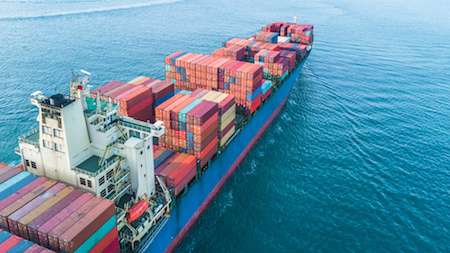 The cost of ocean freight from Asia to the US West Coast has skyrocketed over 500% in the last year, greatly contributing to recent increases in the costs of many materials and supplies used in construction. Delivery times for ocean freight have increased an average of 42% since July 2020, making it more difficult for contractors to get the materials they need to finish projects on schedule. “Just in time delivery” is a way of the past in today’s markets, as distributors and contractors are planning for material demands by ordering further in advance and building and accumulating inventory.
The cost of ocean freight from Asia to the US West Coast has skyrocketed over 500% in the last year, greatly contributing to recent increases in the costs of many materials and supplies used in construction. Delivery times for ocean freight have increased an average of 42% since July 2020, making it more difficult for contractors to get the materials they need to finish projects on schedule. “Just in time delivery” is a way of the past in today’s markets, as distributors and contractors are planning for material demands by ordering further in advance and building and accumulating inventory.
In July 2021, Asia-US West Coast ocean freight rates reached $18,346 per shipping container, more than six times its level a year ago. Asia-US East Coast prices climbed to $19,620 per shipping container, 487% higher than July 2020, according to Freightos.
More than ever, leading suppliers are required to actively manage and adjust their procurement strategies to make sure their clients can get quality product, when they need it, for a competitive cost. Since the start of the pandemic, Bobby Williams, President of United Tool and Fastener, has been expanding his warehouse capacity, building inventory, and working with his vendors and clients to order supplies as far ahead as possible.
“These delays and price hikes are worse than anything I’ve ever seen in my 42 years of doing business. It’s gone from 90-120 days to 180 days minimum from order point to delivery. It used to cost $4000 to have a container full of screws shipped here and now it costs in the neighborhood of $20,000. That’s an increase of around $14.50 in base cost per box. Thankfully we have established relationships with our vendors, who I’m on the phone with almost every day asking to send us the first order that they can,” said Williams.
US demand for materials and goods from Asia is so high that many ship lines are overselling the spaces on their ships, and container orders negotiated at contract rates are getting rolled and delayed in favor of containers paying priority rates. Many ships have stopped offering space at negotiated contract rates altogether and simply opt for the highest bidders, citing force majeure due to the pandemic.
“These are unprecedented times; the industry has never seen anything like this,” said John Laubacher, Director of Prime Source Direct, one of the top building materials importers in the US. “
“We have many factories throughout the globe and they cannot get space on steamship lines at negotiated contract rates, as the steamship lines are not honoring the contracts. Consequently, we get a call from a steamship line for a price, we approve it, then they come back a week later and say the spot has been taken and the rates have gone up. It can be like a Danish auction, the freight companies are taking advantage of bidding wars,” said Laubacher.
A large cause for this increase in demand for shipping from Asia to the US has been a significant shift in US consumer spending from services and experiences to goods following the beginning of the pandemic in early 2020 and low interest rates fueling home purchases. This created over a year of “peak demand” for Asia-US ship lines that typically only experience peak demand from July-November. Over the next few months, shipping demand is expected to increase as major retailers like Amazon and Walmart begin to stock up on imported goods to sell during the holiday season. Additionally, there’s a rush to get goods on the water before Chinese factories and ports shut down in early February for 2-3 weeks to celebrate Chinese New Year.
Another problem has been bottlenecks at ports in California and China, which have experienced limited productivity due to COVID-related shutdowns and workforce shortages. A June report estimated that there were over 160,000 containers at the Port of Yantian in China waiting to be exported following a three-day full closure and one-month limited operation of the port due to a COVID outbreak in Shenzen. Over 90% of the world’s electronics are exported out of this port. Making things worse, the coast of China has recently been hit by typhoons that have also hindered port operations.
Because hundreds of thousands of containers are currently sitting idly at ports or in ships waiting to be unloaded, loaded, and moved, these bottlenecks have also created a shortage of containers, making it more difficult for manufacturers to begin shipping supplies. This has also contributed to the increase in shipping costs.
It’s not just ocean freight that is rising in price and experiencing delays; the cost and delivery time of land freight have risen as well. There is currently a shortage of truck drivers and drayage rates have increased from 25-50%.
“We’ve got some containers that have been sitting for two months on the West Coast waiting to get trucked or loaded on to rails,” said Laubacher.
As delivery times remain relatively high and shipping costs continue to hit all-time highs, it has become increasingly important for contractors to plan out the materials they will need for each job and to order them enough in advance to prevent schedule delays.


